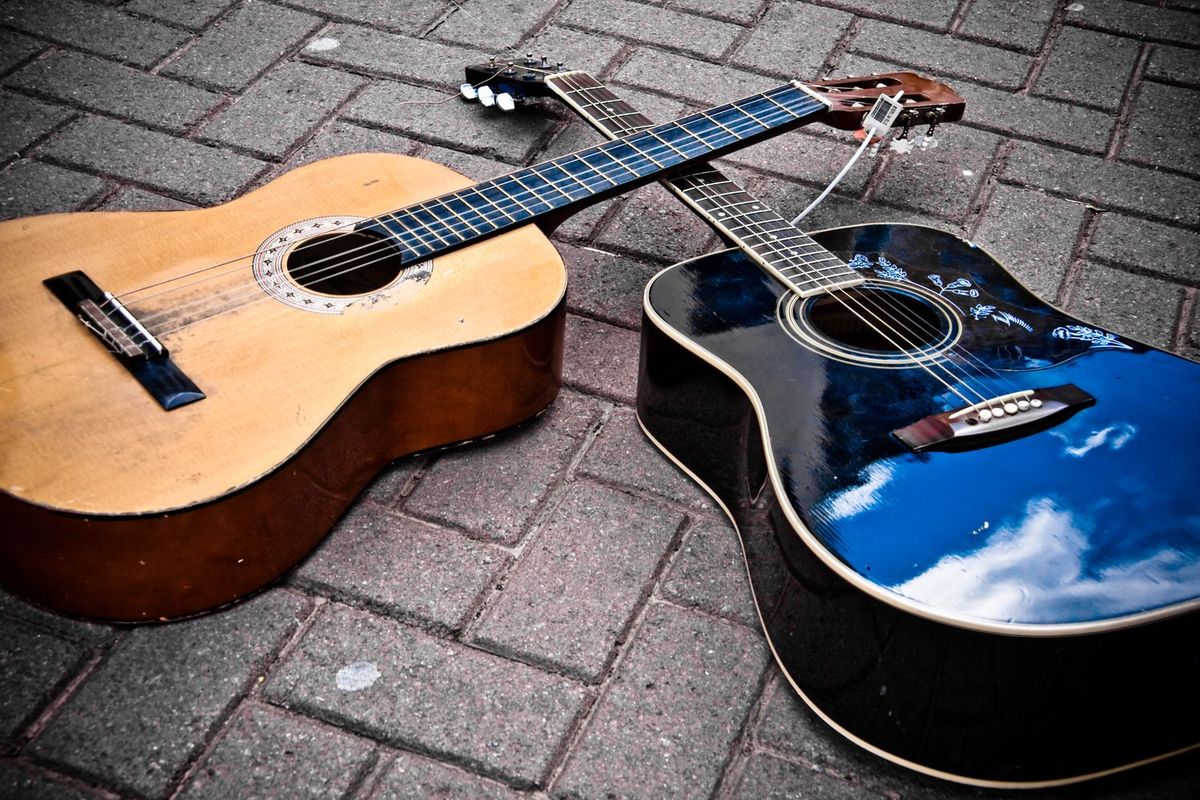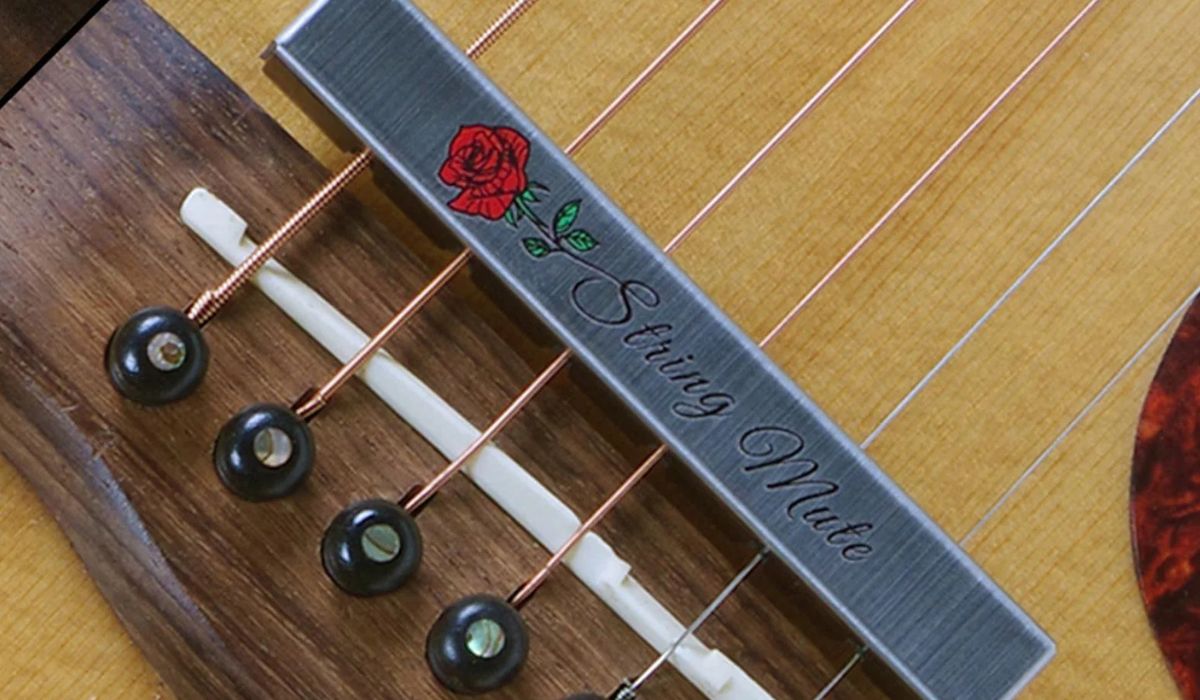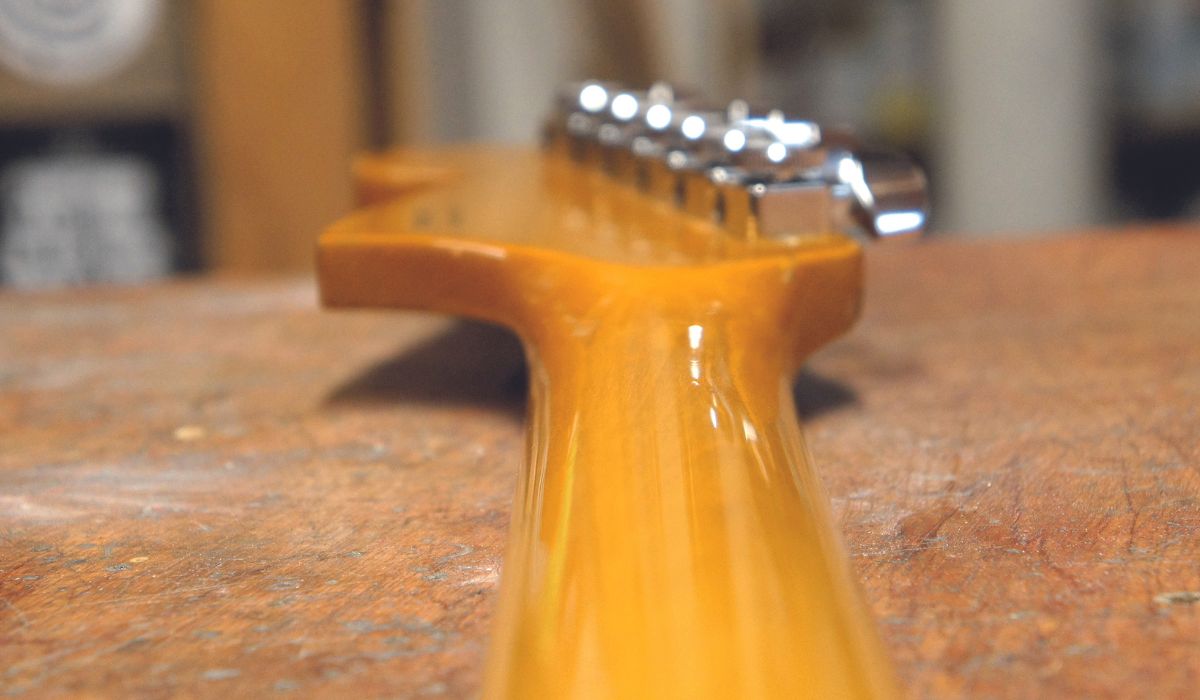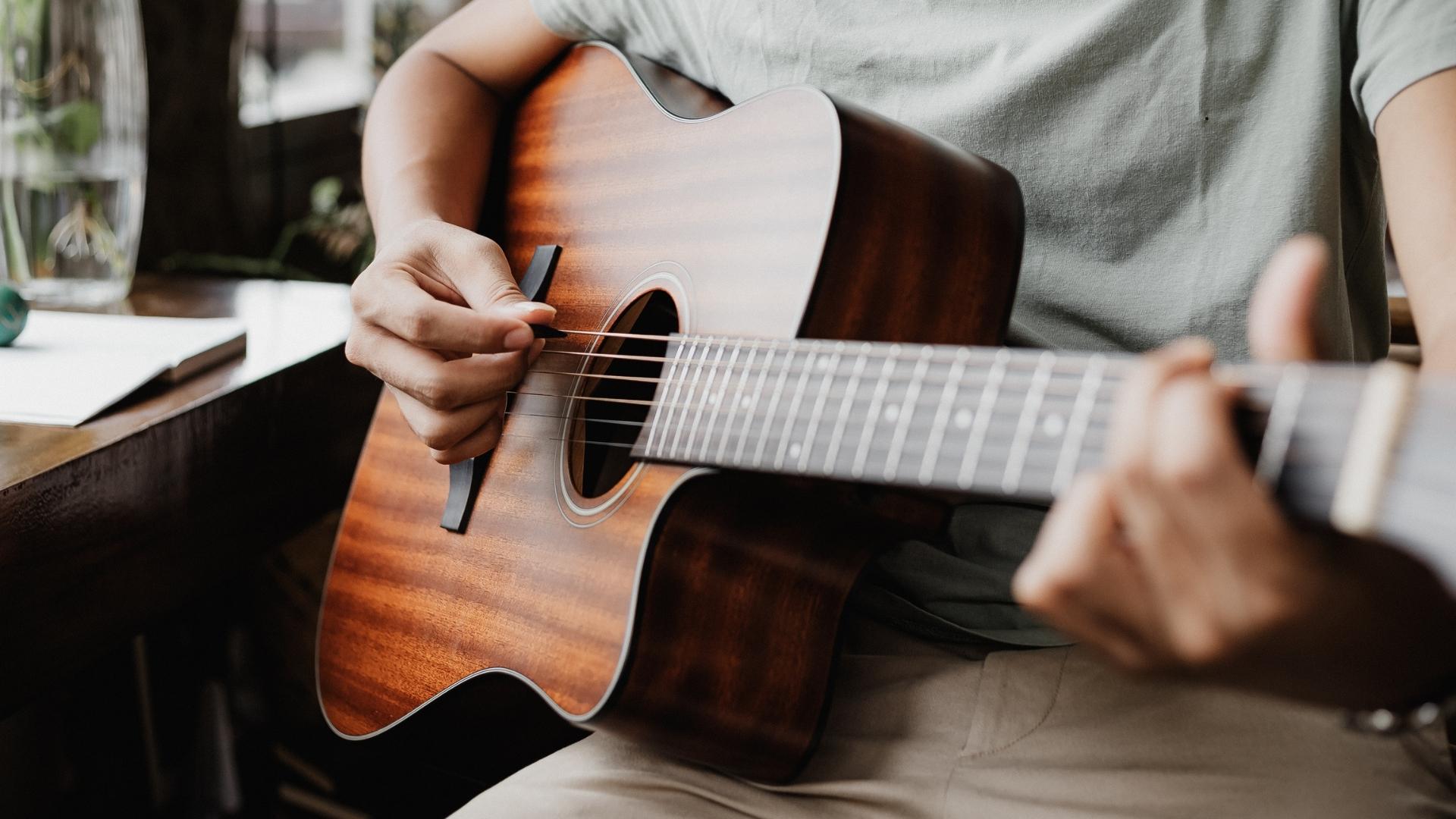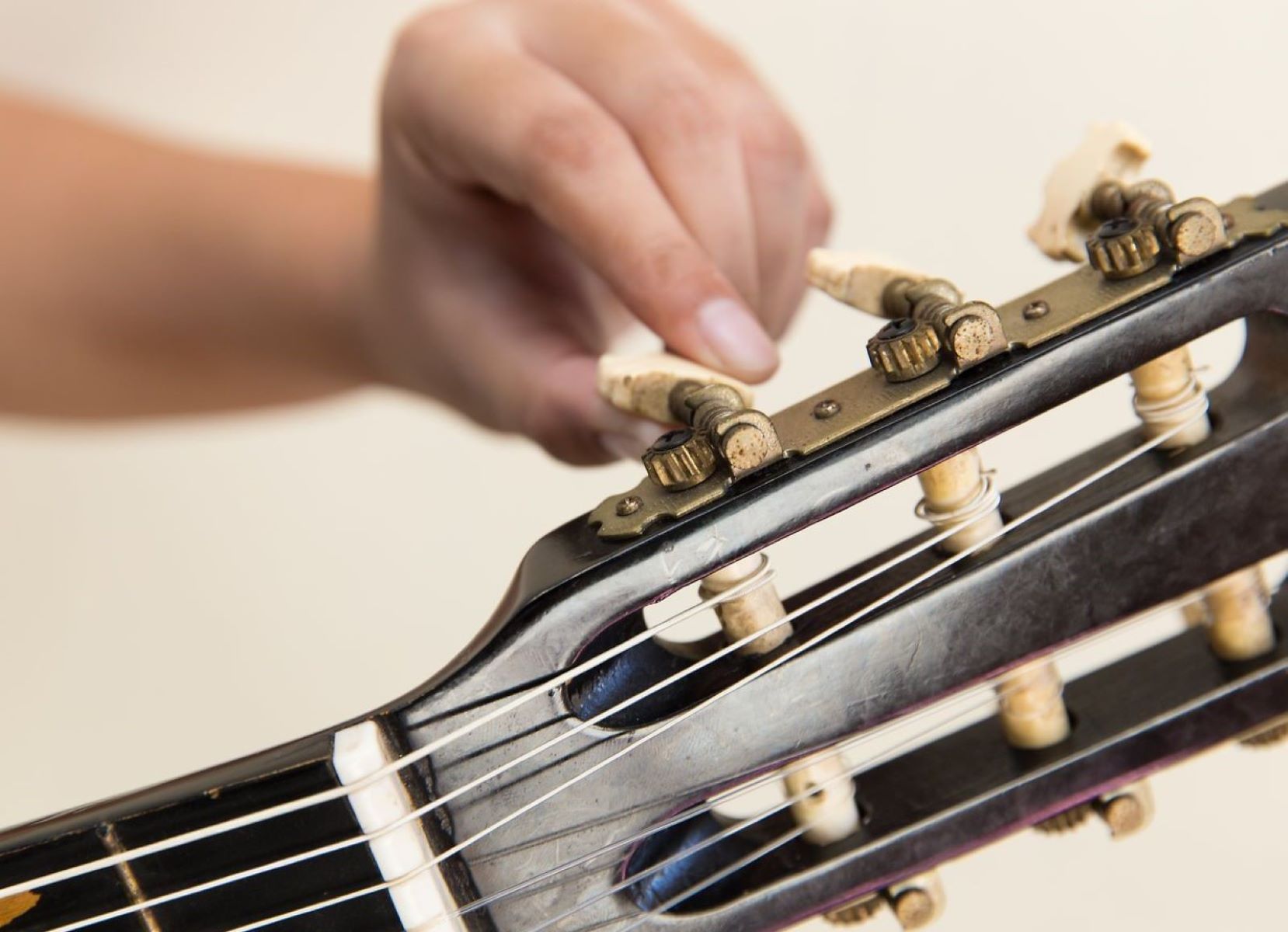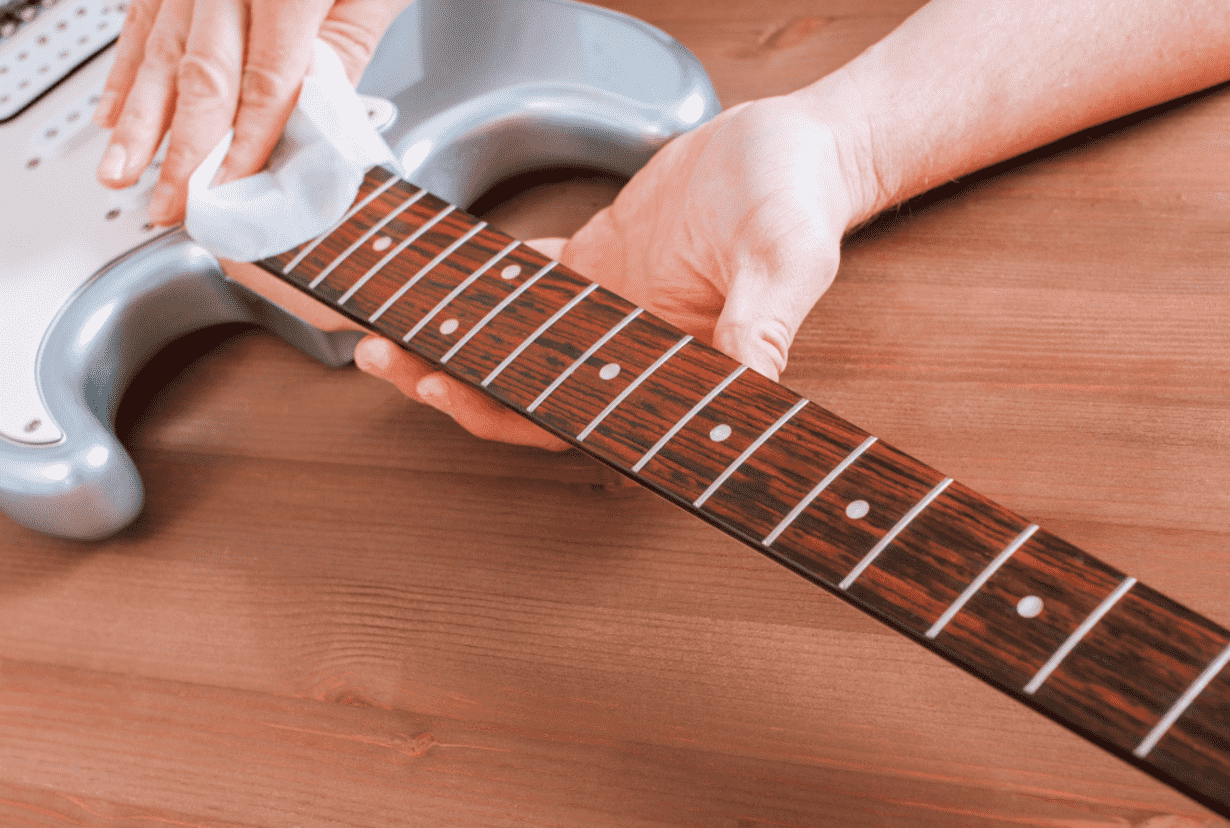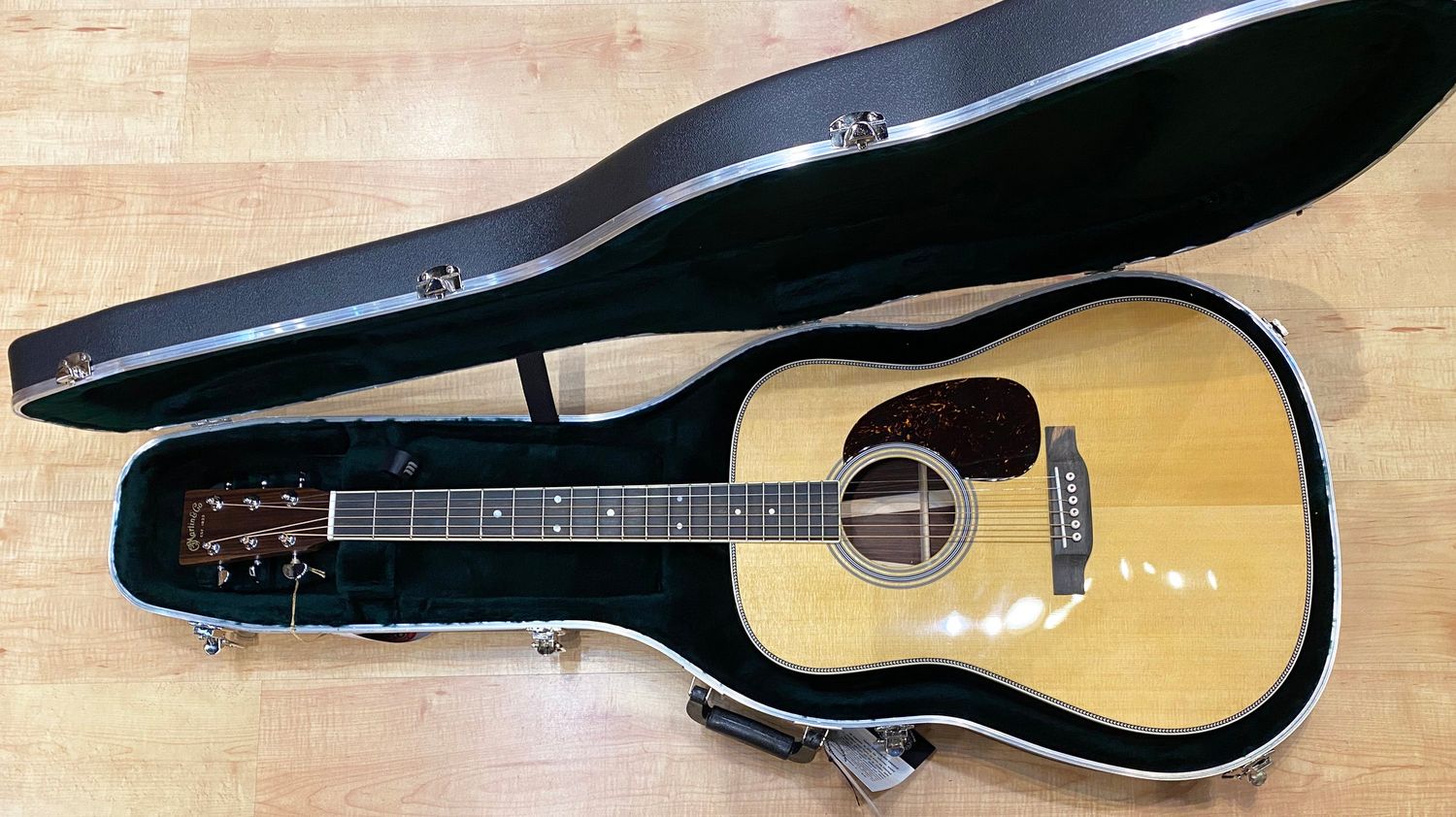Home>Instruments>Guitar>How To Bend On Guitar
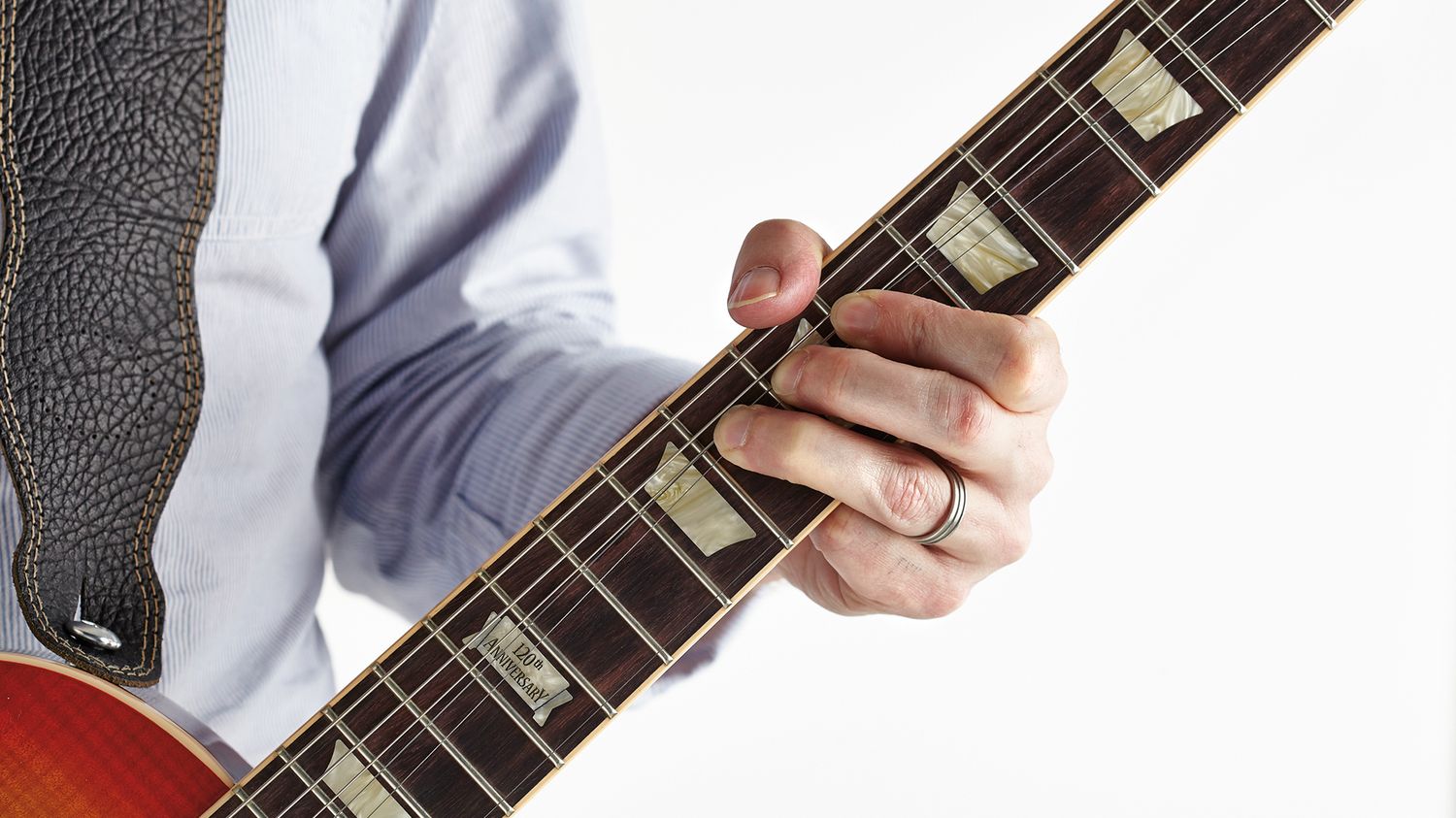

Guitar
How To Bend On Guitar
Published: February 12, 2024
Learn how to bend on guitar like a pro with our step-by-step guide. Master the art of guitar bending and take your playing to the next level.
(Many of the links in this article redirect to a specific reviewed product. Your purchase of these products through affiliate links helps to generate commission for AudioLover.com, at no extra cost. Learn more)
Table of Contents
Introduction
Playing the guitar is a deeply rewarding experience, allowing musicians to express themselves through a versatile and emotive instrument. One of the most expressive techniques in a guitarist's arsenal is bending. Bending on the guitar adds soulful nuances, allowing players to infuse their notes with emotion and character. Whether you're a beginner or an experienced guitarist looking to refine your skills, mastering the art of bending can elevate your playing to new heights.
Bending is a fundamental technique that involves manipulating the pitch of a note by pushing or pulling the string across the fretboard. This action creates a smooth transition from one note to another, adding a vocal-like quality to the guitar's sound. From subtle, bluesy bends to soaring, dramatic bends in rock solos, this technique is a hallmark of various musical styles.
In this comprehensive guide, we will delve into the intricacies of bending on the guitar. From understanding the mechanics of bending to exploring various bending techniques and exercises, this article aims to equip you with the knowledge and skills to master this expressive technique. Whether you aspire to emulate the soulful bends of blues legends or the searing bends of rock gods, this guide will provide valuable insights and practical tips to enhance your bending prowess.
Stay tuned as we unravel the art of bending, uncovering the secrets to infusing your guitar playing with passion, emotion, and unparalleled expressiveness. Let's embark on this musical journey and unlock the captivating world of guitar bending together.
Understanding Bending
Before delving into the techniques and exercises, it’s essential to grasp the mechanics and musical significance of bending on the guitar. Bending a string alters its tension, causing the pitch of the note to rise. This manipulation of pitch is what lends bending its expressive and emotive qualities, allowing guitarists to inject their playing with personality and flair.
When executing a bend, it’s crucial to exert the right amount of pressure on the string while maintaining control over the pitch. The distance by which the string is bent determines the pitch alteration, ranging from subtle microtonal shifts to dramatic, full-step bends. Understanding the nuances of bending and developing a sensitive touch are pivotal in conveying the intended emotion through each note.
Furthermore, bending on the guitar is intimately tied to vibrato, another essential technique for adding color and depth to notes. Vibrato involves oscillating the pitch of a sustained note, and when combined with bending, it creates a rich tapestry of tonal variation and expressiveness. Mastering the interplay between bending and vibrato is a hallmark of seasoned guitarists, enabling them to craft evocative melodies and captivating solos.
From a musical perspective, bending is not merely a technical maneuver; it serves as a means of storytelling through music. It enables guitarists to infuse their playing with raw emotion, allowing them to convey joy, sorrow, longing, and a myriad of other sentiments through the subtle manipulation of pitch. Whether it’s the wistful bends of a blues ballad or the fiery bends of a rock anthem, this technique has the power to captivate listeners and evoke powerful emotions.
As we unravel the intricacies of bending, it’s essential to recognize its profound role in shaping the sonic landscape of the guitar. By understanding the mechanics and musical significance of bending, we pave the way for a deeper appreciation of this expressive technique and its transformative impact on guitar playing.
Techniques for Bending
Bending on the guitar encompasses a diverse array of techniques, each yielding distinct tonal and expressive qualities. Understanding and mastering these techniques is essential for harnessing the full potential of bending as a means of musical expression.
1. Whole Step Bend: This technique involves bending the string to raise the pitch by a whole step, equivalent to two frets on the guitar. It’s commonly used in rock, blues, and metal genres to inject solos with powerful, soaring phrases.
2. Half Step Bend: A half step bend increases the pitch by one semitone, or one fret’s distance on the guitar. This versatile technique is prevalent in various musical styles, adding subtle inflections and expressive nuances to melodies and solos.
3. Pre-Bend: Pre-bending entails bending the string before picking the note, allowing the guitarist to unleash the bent pitch at the desired moment. This technique is employed to create suspenseful, impactful bends and is a hallmark of emotive, dynamic playing.
4. Unison Bend: In an unison bend, the guitarist bends one string to match the pitch of another fretted note, producing a harmonious, resonant effect. This technique is commonly utilized to create rich, layered textures and evocative sonic landscapes.
5. Compound Bend: A compound bend involves bending a string, then using another finger to fret a note on the same string, resulting in a complex, multi-layered bend. This technique adds depth and complexity to solos, showcasing the guitarist’s dexterity and creativity.
6. Release Bend: After bending a note, the release bend technique involves gradually returning the string to its original pitch, creating a subtle, expressive effect. Mastering the control and finesse required for release bends is integral to refining one’s bending proficiency.
These techniques represent a fraction of the boundless possibilities within the realm of bending on the guitar. Each technique offers a unique sonic palette, empowering guitarists to convey a spectrum of emotions and moods through their playing. By honing these techniques, aspiring and seasoned guitarists alike can expand their musical vocabulary and imbue their performances with unparalleled expressiveness and artistry.
Bending Exercises
Mastering the art of bending on the guitar demands dedicated practice and a systematic approach to honing the necessary skills. Incorporating bending exercises into your daily practice routine can significantly enhance your technique, control, and musicality. These exercises are designed to fortify your fingers, refine your ear for pitch, and instill the precision required for seamless, expressive bends.
1. Pitch Accuracy Drill: Begin by fretting a note and executing a series of half-step bends, striving to match the pitch of the note precisely. Focus on maintaining consistent pressure and control to achieve accurate and controlled bends. Gradually increase the difficulty by performing whole-step bends and pre-bends, refining your ability to hit and sustain the target pitch.
2. Bend Release Control: This exercise involves bending a note, holding it at the peak of the bend, and then gradually releasing it back to its original pitch. Practice executing smooth, controlled release bends across different strings and frets, paying attention to the evenness and fluidity of the pitch descent. This exercise enhances your command over the release bend technique, fostering seamless transitions and expressive phrasing.
3. Double Stop Bends: Double stop bends involve bending two adjacent strings simultaneously to produce harmonized bends. This exercise enhances coordination and finger strength while cultivating a keen ear for intervallic relationships. Experiment with various intervals and progressions, exploring the emotive potential of double stop bends in crafting evocative melodies and solos.
4. Dynamic Bending: Dynamic bending exercises focus on incorporating varying degrees of intensity and speed into your bends. Practice executing gradual, controlled bends as well as quick, aggressive bends, exploring the expressive range of this technique. By mastering dynamic bending, you can imbue your playing with a heightened sense of drama and emotion, elevating your solos and melodies to captivating heights.
5. Rhythmic Bending Patterns: This exercise involves integrating bending into rhythmic patterns and sequences, synchronizing the bends with specific beats and accents. Experiment with syncopated and triplet-based bending patterns, infusing your playing with rhythmic vitality and syncopated flair. This exercise nurtures a seamless integration of bending within diverse musical contexts, enhancing your versatility as a guitarist.
By incorporating these bending exercises into your practice regimen, you can cultivate a nuanced and expressive bending technique, elevating your guitar playing to new levels of artistry and emotive depth. Consistent and focused practice of these exercises will empower you to wield bending as a powerful tool for musical storytelling and self-expression, enriching your performances with soul-stirring, evocative bends.
Tips for Improving Bending
Refining your bending technique requires a combination of focused practice, keen attention to detail, and a deep understanding of the nuances involved. Here are some valuable tips to enhance your bending proficiency and elevate your guitar playing:
1. Develop Finger Strength and Dexterity: Building finger strength is crucial for executing controlled and precise bends. Incorporate finger exercises and stretches into your practice routine to enhance flexibility and strength, empowering you to execute bends with finesse and accuracy.
2. Ear Training for Pitch Perception: Cultivate your ear for pitch by regularly practicing scales, intervals, and ear training exercises. Accurate pitch perception is essential for executing bends with precision, enabling you to achieve the intended notes and inflections with confidence.
3. Utilize Lighter Gauge Strings: Lighter gauge strings are more pliable and responsive to bending, facilitating smoother and more controlled bends. Experiment with different string gauges to find the optimal balance between playability and tonal characteristics for your bending preferences.
4. Focus on Hand Positioning: Pay attention to your hand positioning and wrist angle when executing bends. Maintaining a relaxed yet firm grip on the neck and positioning your fingers close to the frets enhances control and minimizes string tension, allowing for effortless bending with minimal resistance.
5. Gradually Increase Bending Difficulty: Progressively challenge yourself by incorporating increasingly demanding bending exercises into your practice routine. Start with half-step bends and gradually work your way up to whole-step and multi-fret bends, steadily expanding your bending proficiency and control.
6. Integrate Vibrato with Bends: Master the art of combining vibrato with bends to infuse your notes with expressive depth and resonance. Experiment with different vibrato styles and speeds, exploring the interplay between vibrato and bending to imbue your playing with emotive nuances and dynamic textures.
7. Embrace Articulation and Expression: Approach bending as a means of articulating and expressing your musical ideas. Focus on infusing each bend with intention and emotion, utilizing subtle variations in bend speed, intensity, and release to convey a compelling narrative through your playing.
8. Listen to Masterful Benders: Immerse yourself in the music of renowned guitarists celebrated for their exceptional bending prowess. Study the bending techniques of blues icons, rock legends, and virtuoso players across genres, drawing inspiration from their expressive phrasing and emotive bending styles.
By integrating these tips into your practice regimen and approaching bending with mindful attention to technique and musicality, you can embark on a transformative journey toward mastering this evocative and expressive guitar technique. With perseverance and a passion for musical storytelling, you can unlock the full potential of bending, infusing your playing with soul-stirring emotion and captivating expressiveness.
Conclusion
Congratulations on embarking on this enlightening exploration of bending on the guitar. Throughout this comprehensive guide, we’ve delved into the intricate mechanics, diverse techniques, and transformative exercises that comprise the art of bending. By unraveling the expressive potential of bending, you’ve gained valuable insights into infusing your guitar playing with emotion, personality, and unparalleled expressiveness.
Bending is far more than a technical maneuver; it’s a conduit for musical storytelling and emotional resonance. From the poignant bends of blues ballads to the searing bends of rock anthems, this technique empowers guitarists to convey a spectrum of emotions through their playing, captivating listeners and evoking profound sentiments.
As you continue to hone your bending technique, remember that mastery is a journey shaped by dedicated practice, attentive listening, and an unwavering passion for musical expression. Embrace the nuances of bending, from pitch accuracy and control to the interplay between bending and vibrato, and infuse each bend with intention and emotion.
By integrating the techniques, exercises, and tips outlined in this guide into your practice regimen, you are poised to elevate your guitar playing to new heights of artistry and emotive depth. Embrace the transformative power of bending, and let your notes sing with soul-stirring emotion and captivating expressiveness.
As you venture forth on your musical odyssey, may the evocative bends you craft on the guitar resonate with passion, storytelling, and the boundless creativity that defines your unique musical journey. Keep bending, keep exploring, and keep infusing your playing with the ineffable magic of emotive expression.
Now, armed with a deeper understanding of bending, go forth and let your guitar become the vessel through which your innermost emotions and musical aspirations find their voice. The world awaits the captivating tales you will tell through the transformative art of bending on the guitar.

